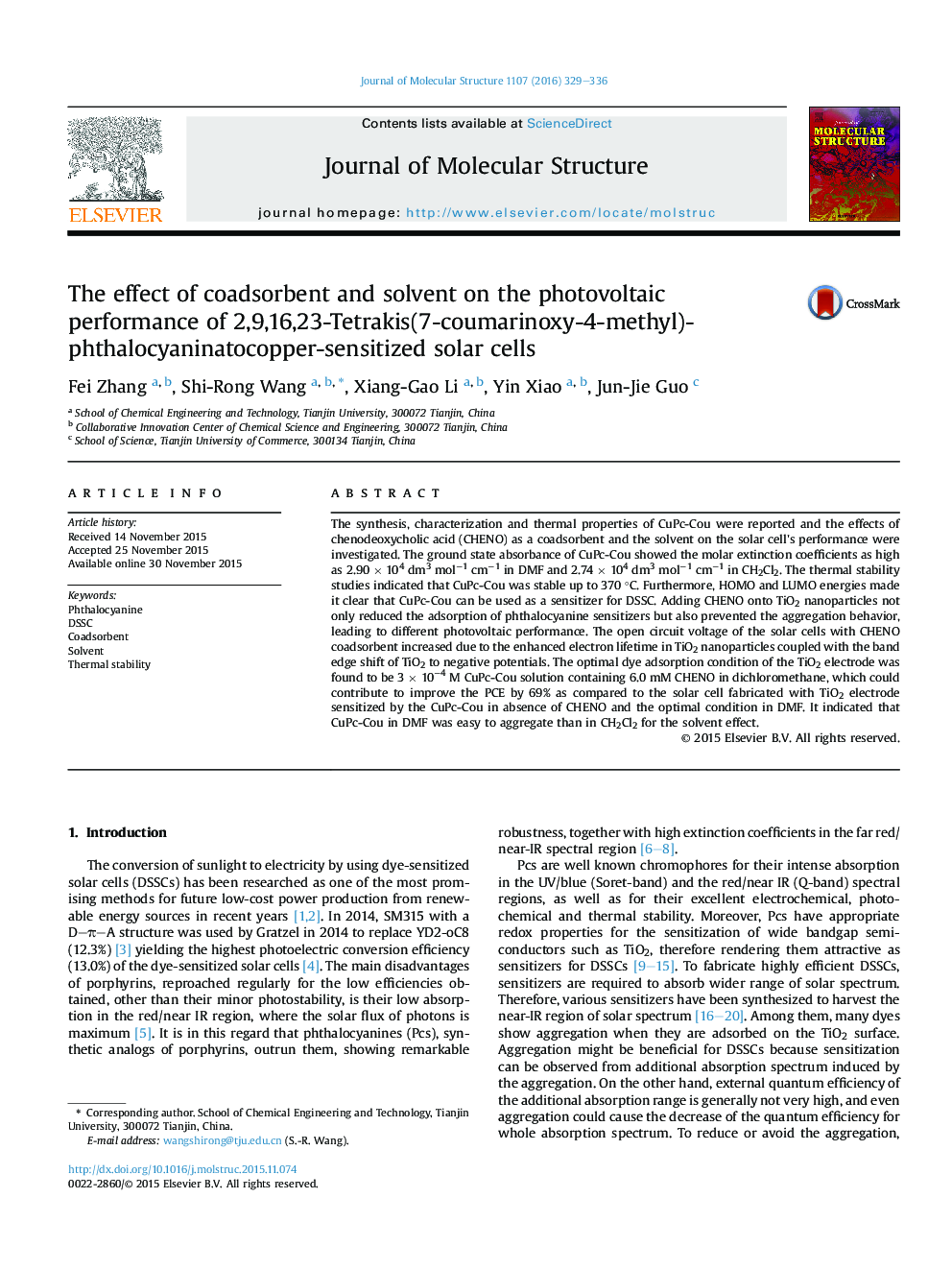| کد مقاله | کد نشریه | سال انتشار | مقاله انگلیسی | نسخه تمام متن |
|---|---|---|---|---|
| 1401460 | 1501710 | 2016 | 8 صفحه PDF | دانلود رایگان |

• The effects of CHENO as a coadsorbent and the solvent on the solar cell’s performance were investigated..
• Adding CHENO onto TiO2 not only reduced the adsorption of Pc sensitizers but also prevented the aggregation behavior..
• It indicated that CuPc-Cou in DMF was easy to aggregate than in CH2Cl2 for the solvent effect..
The synthesis, characterization and thermal properties of CuPc-Cou were reported and the effects of chenodeoxycholic acid (CHENO) as a coadsorbent and the solvent on the solar cell's performance were investigated. The ground state absorbance of CuPc-Cou showed the molar extinction coefficients as high as 2.90 × 104 dm3 mol−1 cm−1 in DMF and 2.74 × 104 dm3 mol−1 cm−1 in CH2Cl2. The thermal stability studies indicated that CuPc-Cou was stable up to 370 °C. Furthermore, HOMO and LUMO energies made it clear that CuPc-Cou can be used as a sensitizer for DSSC. Adding CHENO onto TiO2 nanoparticles not only reduced the adsorption of phthalocyanine sensitizers but also prevented the aggregation behavior, leading to different photovoltaic performance. The open circuit voltage of the solar cells with CHENO coadsorbent increased due to the enhanced electron lifetime in TiO2 nanoparticles coupled with the band edge shift of TiO2 to negative potentials. The optimal dye adsorption condition of the TiO2 electrode was found to be 3 × 10−4 M CuPc-Cou solution containing 6.0 mM CHENO in dichloromethane, which could contribute to improve the PCE by 69% as compared to the solar cell fabricated with TiO2 electrode sensitized by the CuPc-Cou in absence of CHENO and the optimal condition in DMF. It indicated that CuPc-Cou in DMF was easy to aggregate than in CH2Cl2 for the solvent effect.
Journal: Journal of Molecular Structure - Volume 1107, 5 March 2016, Pages 329–336